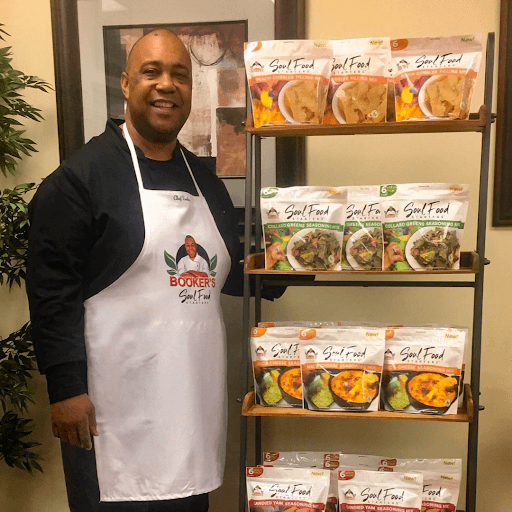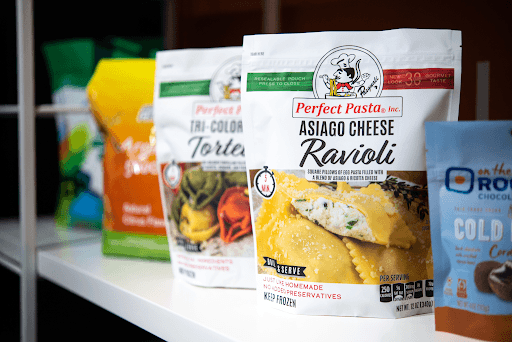If you are a startup CPG brand ready to expand, or maybe you’ve been having success at local festivals and farmers markets and it’s time to take your product nationwide, read on.
Getting your new product into the grocery store can feel like a daunting task. Once you finalize your recipe, you’ll need to determine fair pricing for the product, create the right package to stand out on busy store shelves, and make a list of potential retailers and buyers to target.
As you start to explore selling to food retailers, consider these four steps to bring your product to market:
1. Determine Your Brand’s Product Differentiators
Your brand’s product should align with the interests, needs, and values of a defined target audience. To differentiate your offering, think first about who wants to buy your product, what problem it may solve, why they want it, where they want to purchase it, and how much they’d be willing to pay for it.
To determine your brand’s key differentiators, ask yourself how your product will stand out from the competition ― is it organic, targeted to women only, friendly to “free-from” diets, or does it offer a unique and captivating brand story? There many ways your product might be different from the crowd, including:
- Targeted to a specific market
- Featuring unique attributes
- Specific ingredients list
- How the product is made
- Definitive claims
- Unique brand heritage/story
- Specific technologies and/or patents
- Winning endorsements and/ or awards
- Brand personality
Find what will make your product unique and play up those features.

2. Conduct Market Research with Your Target Consumer
The goal of any new brand is to succeed and resonate with consumers. To find if your product fills a void or need in the marketplace, you can test your product to gather feedback in your local market and research your target audience.
You can gather feedback by selling your product at local farmers markets and festivals. You can see how the product sells, how much you can charge for it, and what type of customers buy it. You can also gather direct feedback and opinions.
Also, as you research your target audience, look at who you plan to market your brand to, what their values are, and what their needs are. Where will they want to purchase your product and how much are they willing to spend on it? What type of packaging will best suit their lifestyle? The more information you gather, the more you can tailor your approach to resonate with your target buyers.
When you’re finally ready to present your products to retail buyers, you’ll have all the details you need to share what your product is, how it is different from what their store already sells, and how it fills a need in the market.
10 Day Turnaround Times?
Need it fast? We can help. Rollstock orders can ship in as little as 10 business days after artwork approval. Formed pouches in as little as 15!
3. Develop a Creative & Unique Product Packaging Design
Having a high-quality package with a great design can drive more sales for your brand. As you create your package, look into essential design elements, brand messaging, and special features to ensure your package stands out. Ask yourself how you can present your product in a unique way. Will you have a reseal closure when competitors don’t? A pouch where others are sold in boxes? Bright colors and a bold design to stand out from the rest?
As you work to create the best package for your brand, keep in mind a few key things:
- Communicate your brand story and messaging clearly and in an engaging way through language and artwork.
- Leverage a great design to set your brand apart.
- Clearly communicate what the product is and why consumers may want to purchase it.
- Keep the design well balanced and not overcrowded or cluttered.
Remember that the package itself does a lot to capture attention, and ultimately, drive purchase. In a report from Nielsen, 64% of consumers reported trying a new product because the package caught their eye, and 41% will continue to purchase a product because they prefer its packaging.

4. Find the Perfect Type of Packaging for Your Product
To enter into the retail space, develop attractive and functional packaging that meets all U.S. Food and Drug Administration labeling guidelines for the type of food product you are packaging. After that, consider the type of packaging (and its features) that will best serve your product.
Did you know that consumers love stand-up pouches? Like all flexible packaging, they’re lightweight, easy to handle, carry, and store. Plus, many are equipped with reclose options to make the packaging resealable for convenience and extended product freshness.
Flexible packaging allows for high-impact graphics on every inch of the pouch, for 360° of branding since you aren’t limited to the size of a label. And digital printing packaging offers precise, photo-quality graphics and images. Another great thing about custom flexible packaging is that it is available in various sizes and forms to work with just about any application and in sizes ranging from single-serve to multi-use. Plus, it can be created as a stand up or lay flat pouch, with spouts, reseal zippers, tear notches, and in various other options for ultimate customization.
Need help creating the right package to resonate with consumers and retailers? Wondering how do I distribute my food product? Call us today and let us help you through the process of creating a stand-out package for retail shelves.


